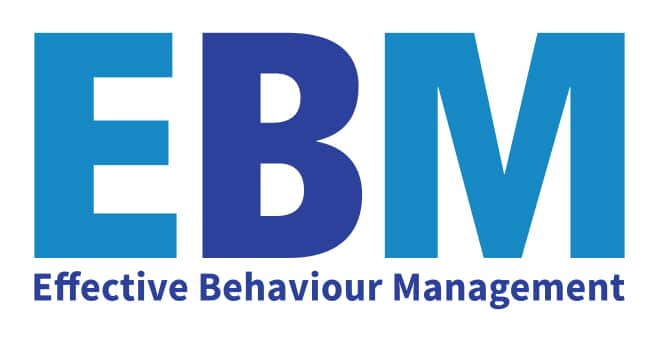Detention is one of the most common forms of behaviour management in schools, and also the least effective. Often when there is no lasting improvement in behaviour, there is a tendency to increase the punishment. Increasing punishment still doesn’t improve behaviour, it only make it worse.
What is detention
The word detention means to hold something or someone back. It usually involves depriving a student of a portion of their break time or time outside of school hours. It’s done with the expectation that this will improve their behaviour .There is also the belief that there should be consequences for the learning time lost. Most of the time in detention a student sits on their own while they are supervised by a teacher. They might complete school work, or often sit with other students and do nothing until the time passes.
Expectations of detention
It’s believed that students won’t want to repeat the experience because it is inconvenient or uncomfortable. But the fact that detention is pervasive in school culture indicates that it is a repeated experience for many students. And it’s not always uncomfortable. Some kids will actively seek detention if it means they get to avoid the school bully or congregate with like-minded friends. For others, detention is an opportunity to stay inside when it is freezing cold or boiling hot.
Detention can be issued so frequently with some students that they end up accumulating detentions. I have seen students tell their teachers they can’t go to their detention because they have already been given other detentions by other teachers. As a result, they end up taking repeated detentions over consecutive lunchtimes like paying off a debt.
Whole class detention is done with the expectation that peer pressure will motivate the disruptive students. Often this backfires because the students being punished through no fault of their own become resentful. The teacher imposing the detention may find well behaved students become less cooperative with them.

Detention makes behaviour worse
Detention is prevalent as a part of school culture and behaviour management policy. This clearly indicates that detention is repeated and does not improve behaviour as expected. Often when there is no lasting improvement in behaviour, there is a tendency to increase the punishment using a “step system” (Sullivan, 2016). This involves additional or longer detentions, eventually leading to suspension for repeated misbehaviour and sometimes exclusion for repeated suspensions. The problem with this stepped approach is that it still doesn’t improve the behaviour, it often makes it worse.
Improvement in behaviour is usually only short term unless students are taught a replacement behaviour. Improvements are often only superficial, looking like compliance but not engagement. The child who is punished because they were calling out may not call out anymore. But they may not engage in any future classroom discussion either.
Nobody wins with detention if the time is not used productively. It’s not just kids who lose their time, it’s teachers too. For many teachers they have to give up their own time as well. And supervising the detention room can be an awful experience having to deal with a congregation of angry and resentful kids with similar behaviour experiences inclined to raise merry hell.
Reflection
Some schools try to turn detention into a more positive experience by renaming detention to something more encouraging such as reflection time. Reflection usually this involves the student filling in a form with a series of questions asking them to think on their behaviour. What usually happens is that students complete reflection questions on their own and end up giving the expected answers just so they can get out.

If detention doesn’t work why do we still do it?
There is actually very little research evidence that supports the use of detention. There is more evidence that detention and other punishments that lead to isolation such as suspension can actually make the behaviour worse rather than better. Yet detention remains as ubiquitous as the classroom itself. So if there is little evidence that detention works as a behaviour management strategy, why is it still so prevalent?
The quick fix and seen to be “doing something”
Most responses to correct difficult behaviour are reactive, particularly when the behaviour is noticeable. It’s easy to notice problem behaviours such as students calling out, talking in class, refusing to do work, arguing or swearing. When problem behaviours are noticeable, there is often an expectation that teachers need to be “seen to be doing something.” Detention tends to be a quick response that satisfies observers that something is being done.
However, long term problematic behaviour that has developed over time will not be quickly corrected with one punishment. If replacement behaviour is not actively taught, then there is very little chance that the problem behaviour will change, and the cycle of detention as a response will continue again. All that is being done is a reaction to the problem behaviour, not a meaningful resolution to solving the problem in the long run.
Detention as an opportunity to repair relationships
Some teachers will refer students to a senior teacher for detention, the difficulty with this is that they lose the opportunity to develop a productive relationship with their student. Detention, for want of a better term, can be valuable if you use that time to work personally with the student to repair the relationship. It is a good opportunity to find out what’s behind the behaviour. If they are struggling with the classwork, use the time after class to help them. If they are struggling emotionally, use the time when the classroom is quiet to get a clearer understanding of what their concern is. If you want to get to the heart of the problem, use detention to listen to your student as much as talk to them.
Using detention effectively
Detention tends to be the go-to response for any number of problem behaviours from work not completed, disruption, lateness to class and even uniform infringements. No one likes to give up their time, so decide which behaviours warrant detention and how the time in detention can be used more effectively. Decide what you want students to learn in detention and how you intend to teach it.
If detention is given for work not completed, work with the student to help them complete their work. If detention is given for disruption, work with the student to find out what is causing it. Usually disruption is an attempt to get attention or avoid a task. Detention would be a good opportunity to teach the student more effective ways to get attention or to ask for help if the task is difficult, or they are having problems with another student. If detention is given for arriving late to class, help students develop strategies to get to class on time such as setting a reminder on their phone or helping them with their timetable. If detention is given for a uniform infringement, find out if the student has the uniform they need and if they need support.

Effective detention scenario
Make decisions about when detention should take place as well. Sometimes waiting until the next day when the child is calmer to chat with them is more effective than reacting straight away in the heat of the moment.
Bill Rogers gives an example of how detention can work effectively (Rogers, 2015, p.201). He describes a scenario when a child got involved in a fight on a school bus and ended up kicking the paneling of the bus before running away. Rather than chase the student in the heat of the moment, the teacher followed up the student the next day at lunchtime detention. While they talked about the incident, the student revealed another student had been teasing him. He kicked the bus in anger and frustration. There were clearly complexities in this problem. Damaging the bus was only one issue, the teasing was another. Focusing on the bus, the teacher asked: “What can you do to fix things up with the bus?” After some discussion, the student decided he should apologise to the bus driver. For the remainder of the detention time the teacher helped the student write a letter of apology. On another day, the teacher went with the student to meet with the bus driver. The teacher acted as a mediator to resolve at least part of the problem.
Learning does not take place in a vacuum. Putting students on detention with no meaningful interaction is just that vacuum. If you must use detention, then use it as a learning opportunity where you as the teacher use the time to get to the heart of the problem.
Rogers, B. (2015) Classroom Behaviour: A Practical Guide To Effective Teaching, Behaviour Management And Colleague Support. 4th Edition, Sage Publishing
https://uk.sagepub.com/en-gb/eur/classroom-behaviour/book242712
Sullivan, A. (2016) Schools’ tough approach to bad behaviour isn’t working – and may escalate problems May 27, 2016 The Conversation







